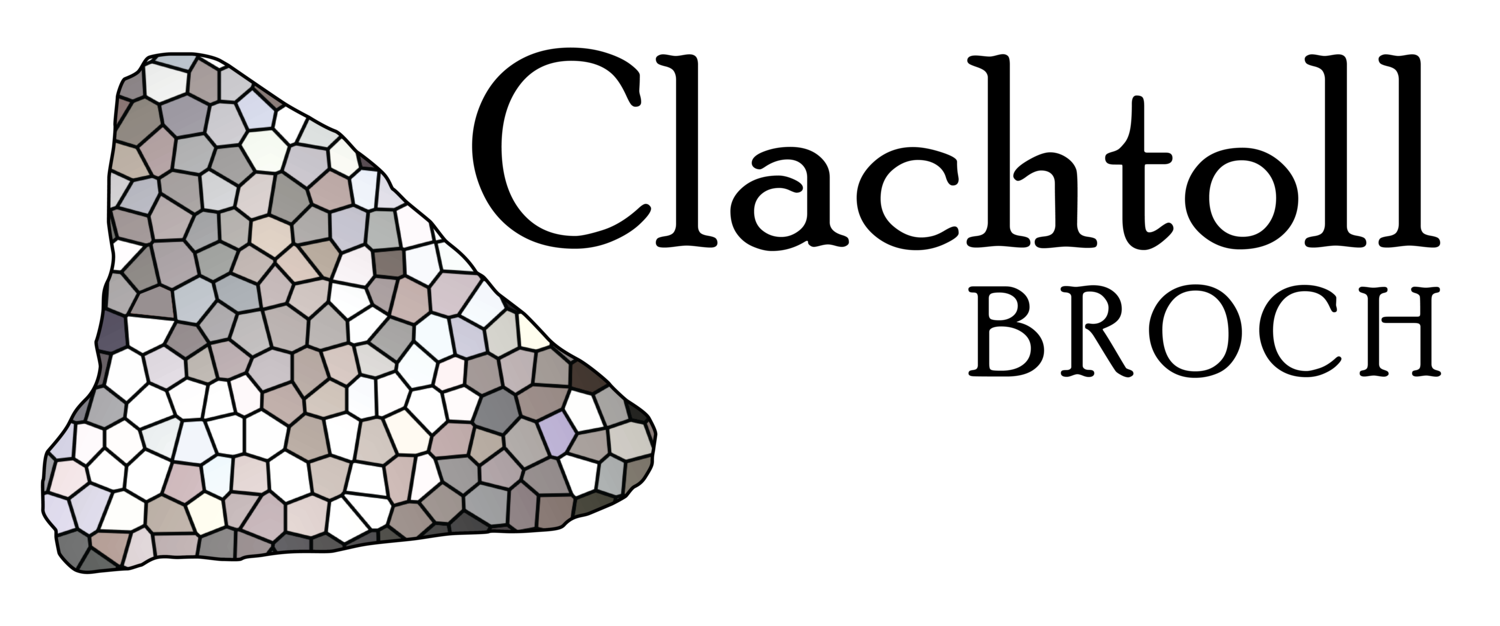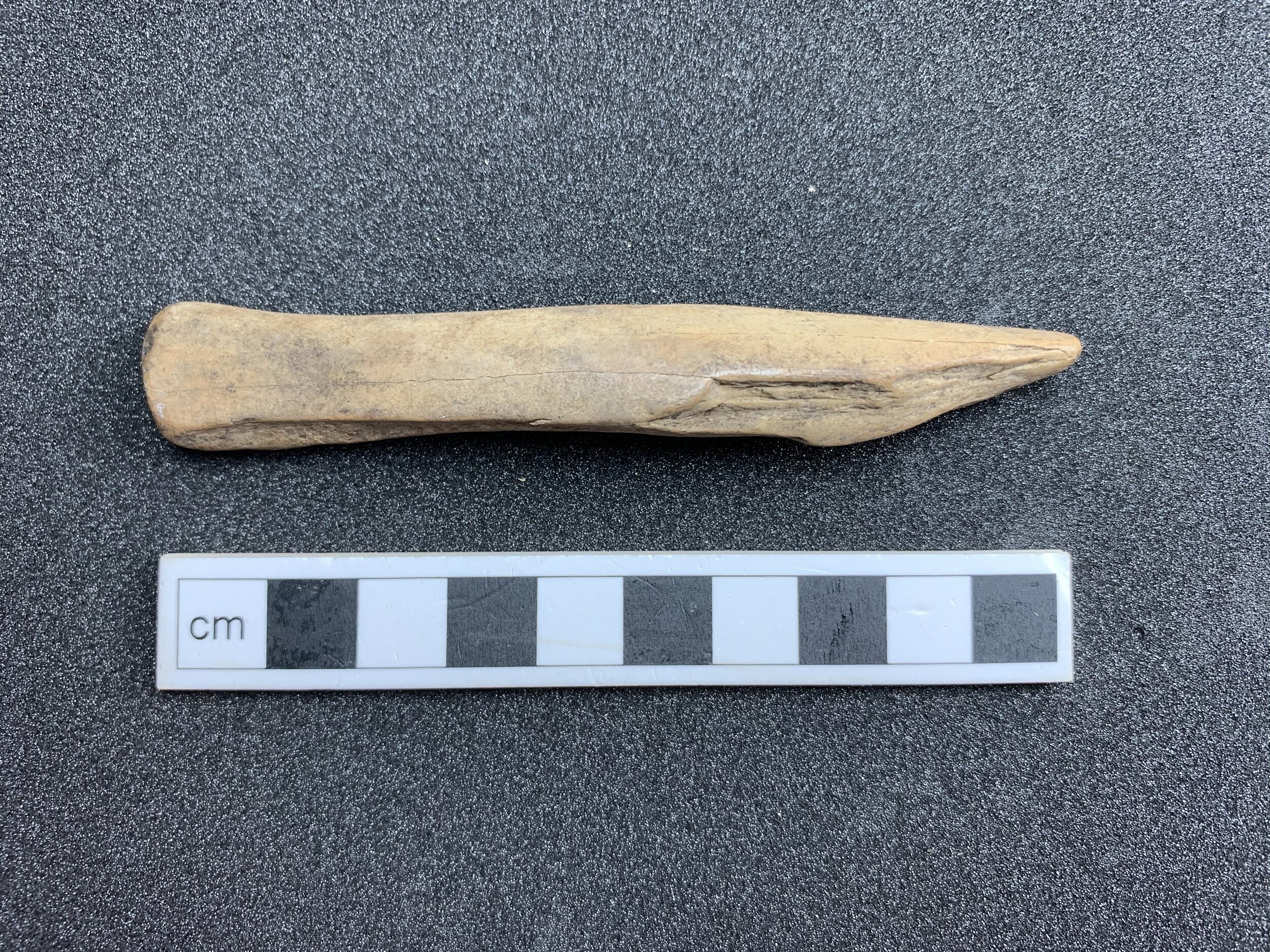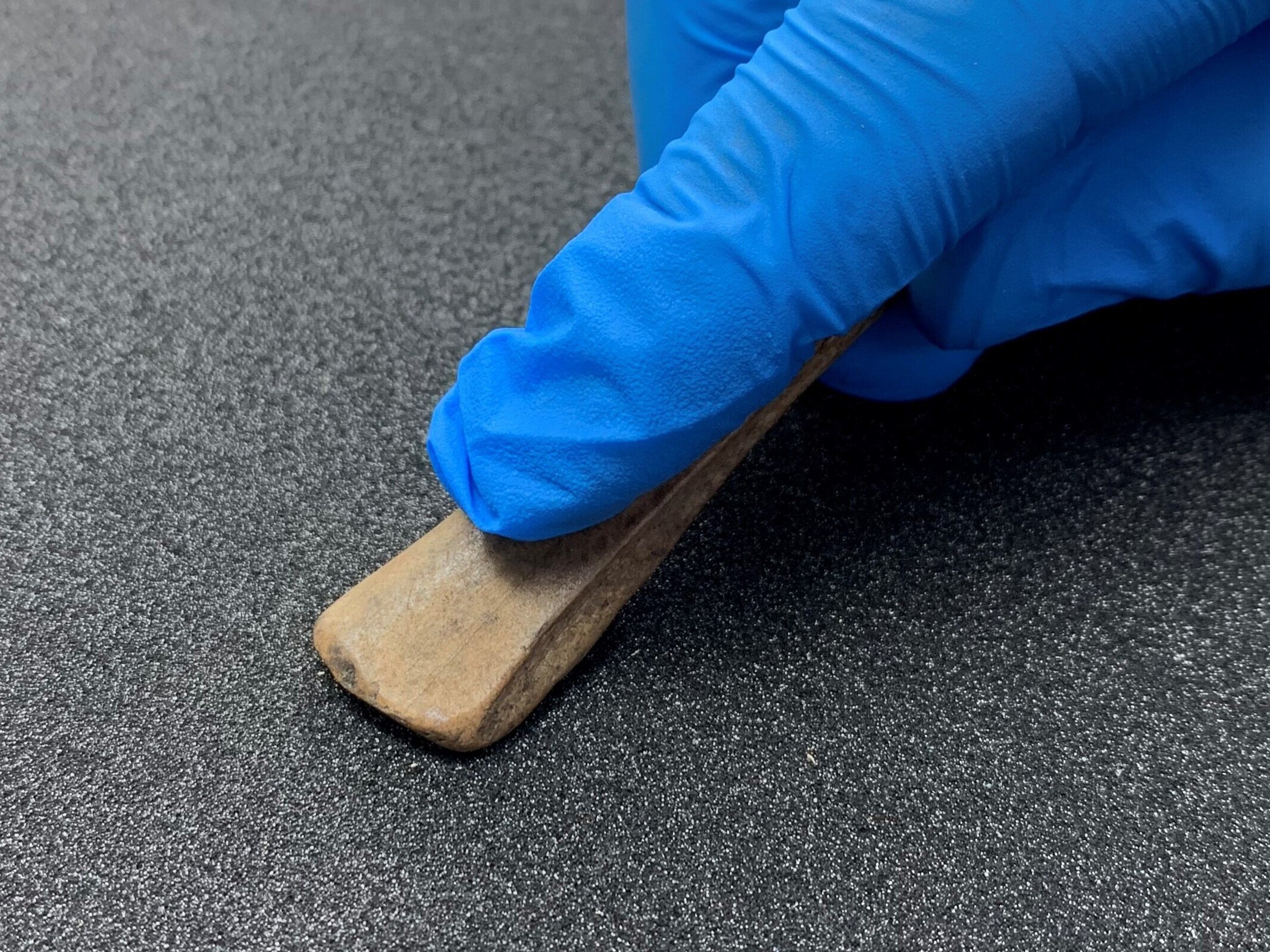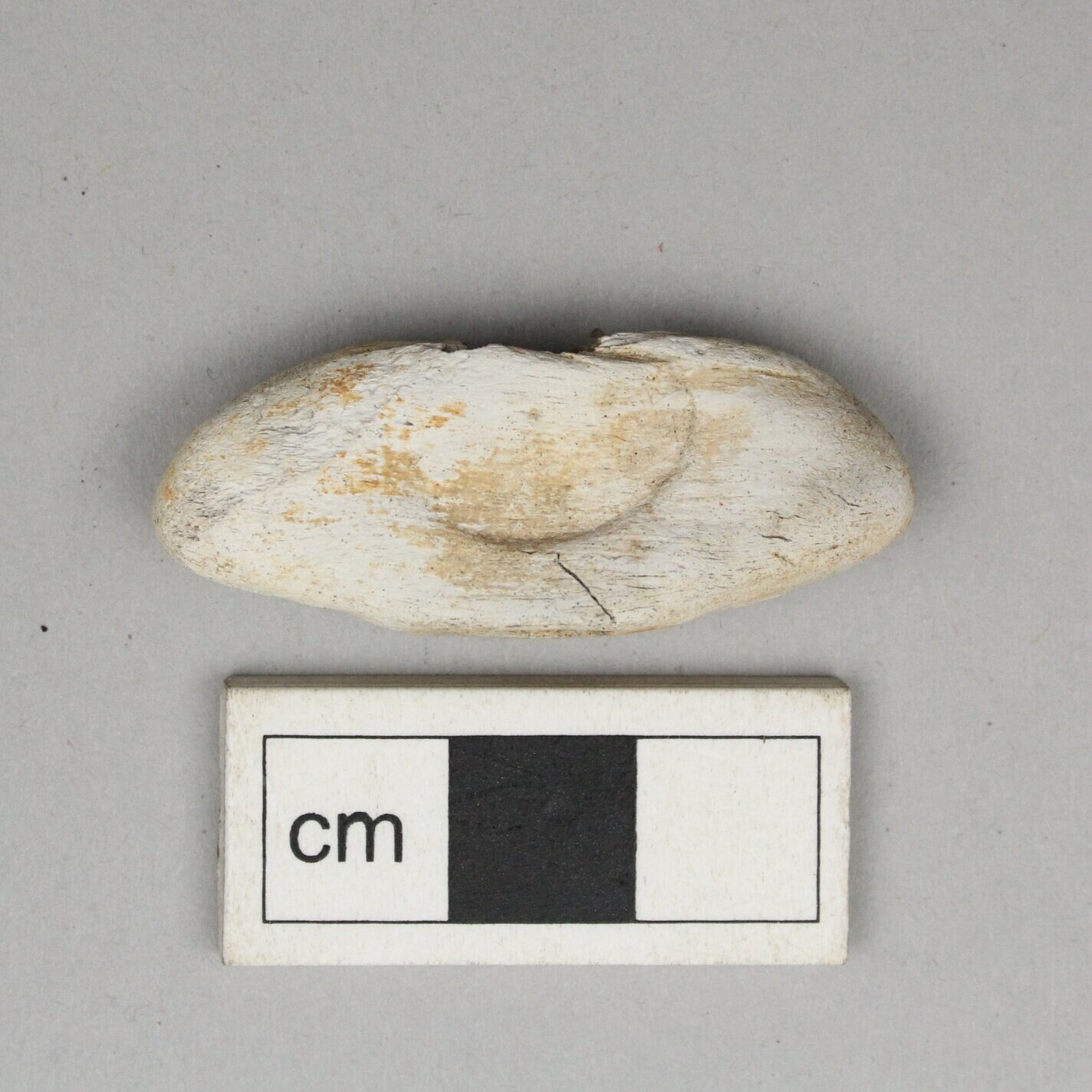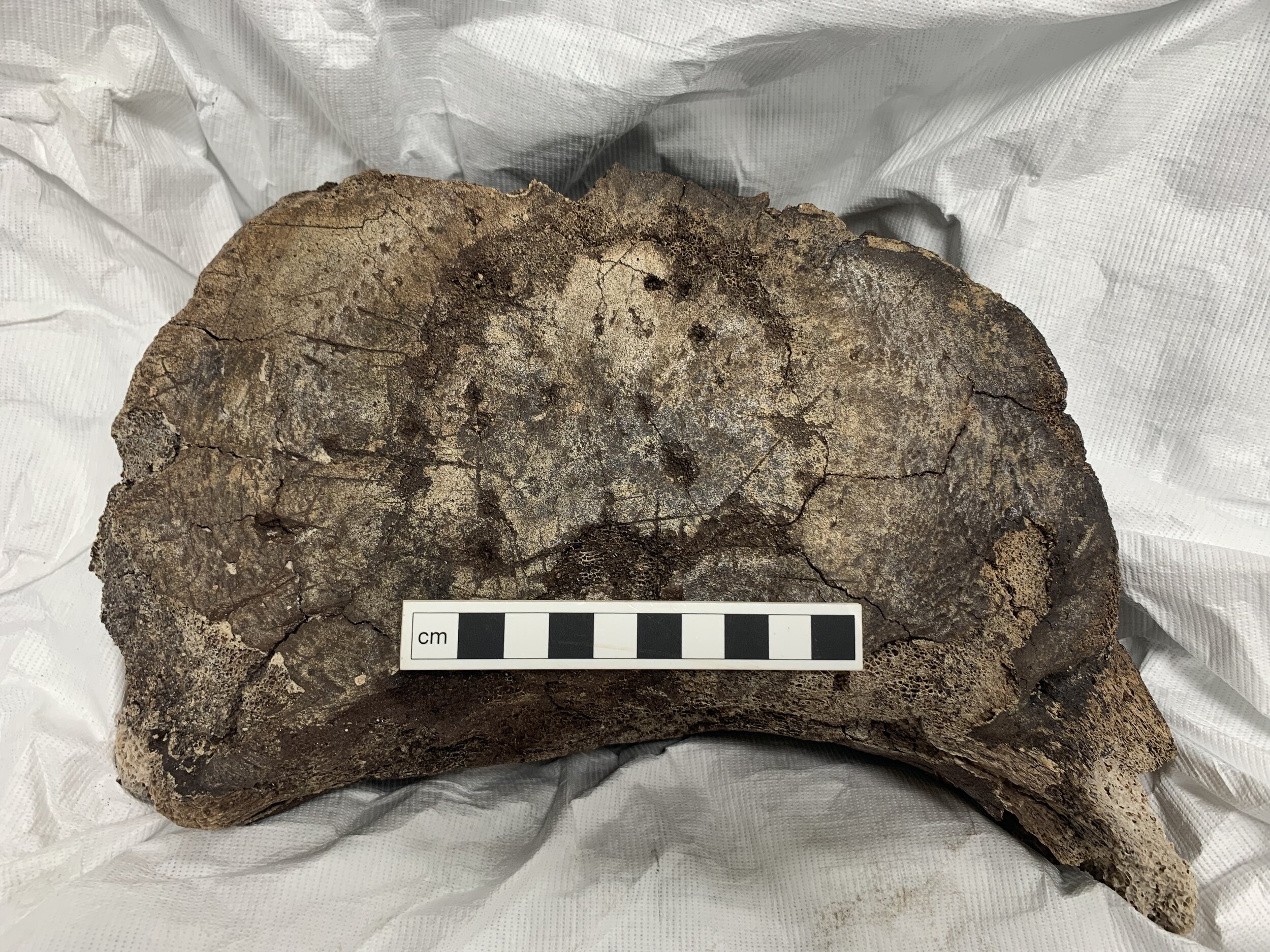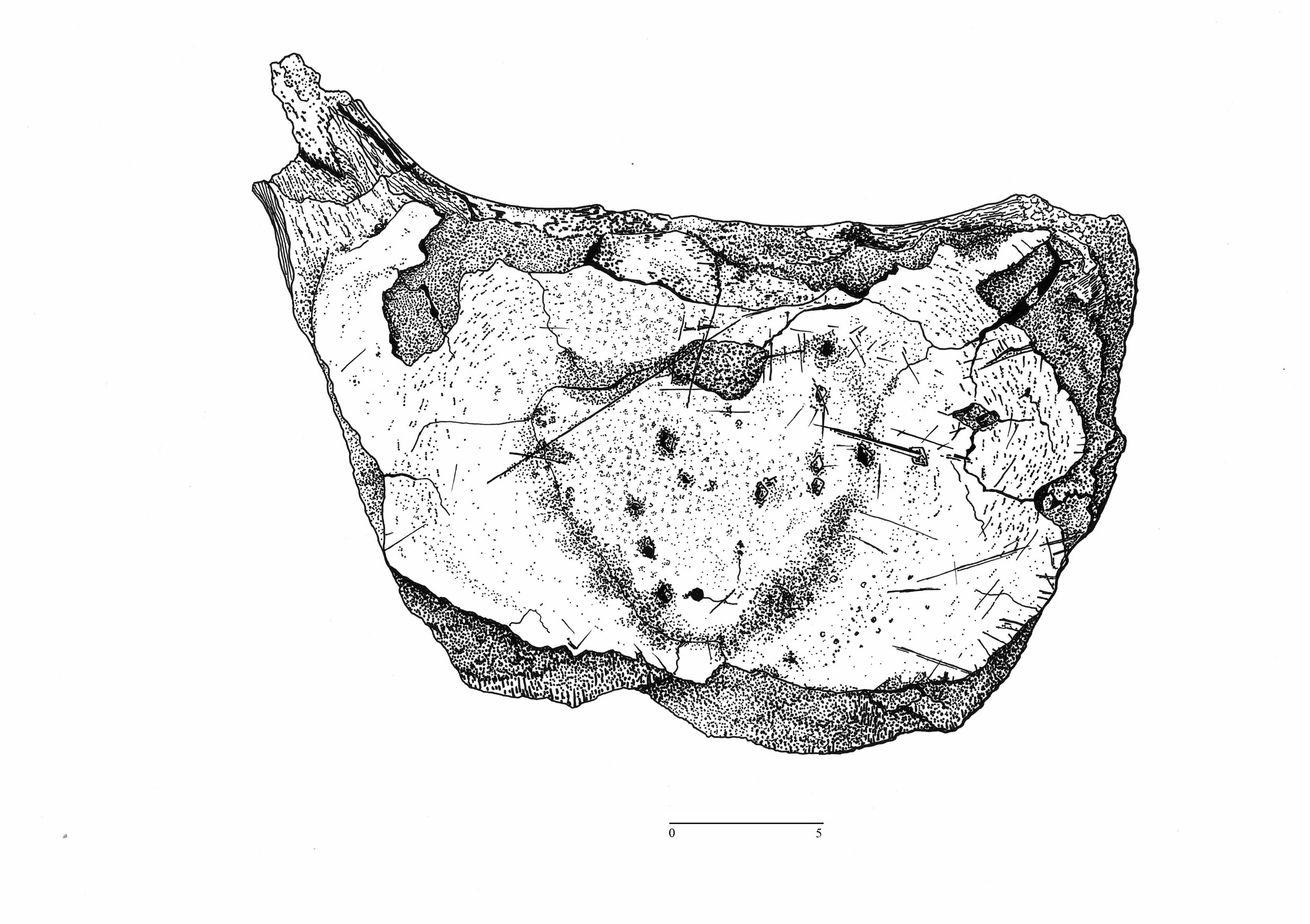
Bone and antler were used to make a wide range of tools and ornaments
More than 50 worked bone and antler items were discovered at Clachtoll
They provide valuable information about the types of activities that took place within the broch.
Everyday Objects, Versatile Materials
Bone and antler are versatile materials that were used to make a wide range of different objects during the Iron Age, including tools and personal ornaments. The community at Clachtoll Broch took advantage of locally available materials, creating objects from the bones of the sheep, goats and pigs they reared, as well as the antlers of wild red deer. Whale bone, likely scavenged from local beaches, was also used.
A number of unfinished objects were found at the broch, like the toggle shown here. These part-worked finds tell us that bone and antler objects were being made on site.
Tracing the Tools
We have analysed traces on the surfaces of the bone and antler objects from Clachtoll Broch to look at how they were made. Few iron tools were found at the broch, but tool marks on the bone and antler objects provide evidence for the use of iron tools such as axes or cleavers, saws and fine blades. The objects were also shaped using pumice or sandstone pieces, used as files. The perforated needle shown here, for example, is covered with irregular scratches made during the manufacturing process.
Crafts
A variety of crafts and activities are indicated by the types of bone and antler objects we found. Many of them are related to textile production. These included needles, long-handled combs which may have had a role in weaving, and tools used for preparing hides to make leather. A small spatula-shaped tool may be a tool used in making pottery, either for shaping the clay or producing decorative patterns.
A long-handled comb on the day it was found
Bone rubber
This bone rubber may have been used in processing hides
Looking Good
Dress accessories are among the most intimate of the objects discovered on archaeological sites. They conjure up images of the people who wore them.
Three pins were found. They would have been worn as ornaments, fastening together cloaks or other garments.



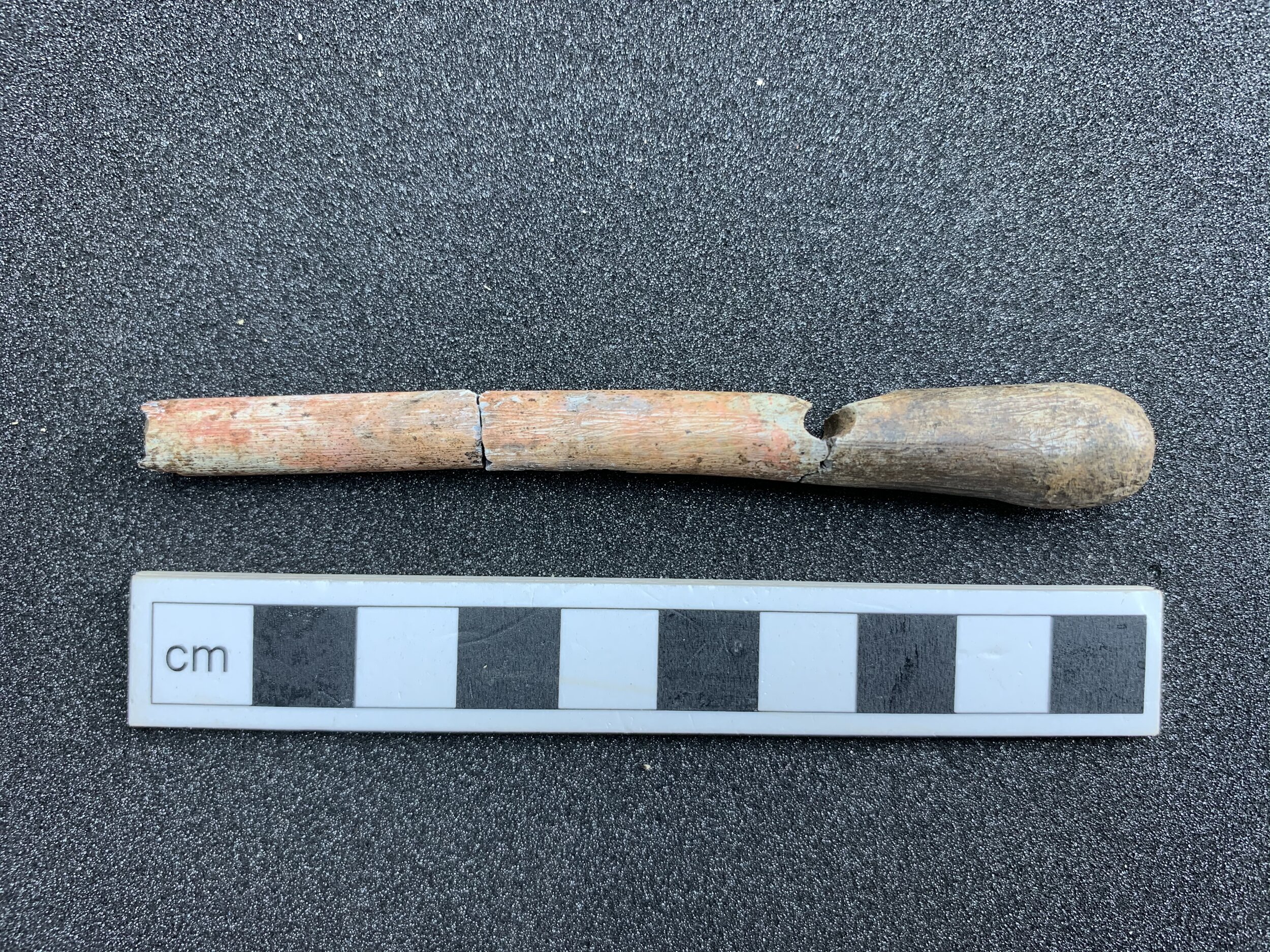
Part of the Picture
Some of the bone and antler objects found were components from objects made from two or more materials. Several handles would have been fitted to iron objects, such as knifes.
A stand-out object within the group of bone and antler objects from Clachtoll Broch was a pommel made from whale bone. A pommel is a rounded knob fitted to the end of the handle of a sword or dagger.
While no traces remain of the metal handle and blade of the weapon that the pommel from the broch was attached to, its small size suggests it was from a dagger or even perhaps from a miniature implement. It was finely made and decorated with carved motifs. Similar pommels have been found in other brochs and in wheelhouses across the Northern and Western Isles. The pommel from Clachtoll Broch, therefore, points to a wide network of contacts beyond the site and its local area.
Whalebone Working Surface
Though perhaps not the most aesthetically pleasing, this bone object tells us a great deal about the activities of the people of the broch. It is made from the vertebra of an adult whale. It has been used as a chopping block and working surface – one side is covered with tool marks made during craft activities. The marks were formed by at least four different tools including diamond- and circular-tipped punches and perhaps a cleaver. These objects, probably made of iron, do not survive in the artefact assemblage, but their presence at the broch is evidenced through the marks they made on the whalebone working surface.
